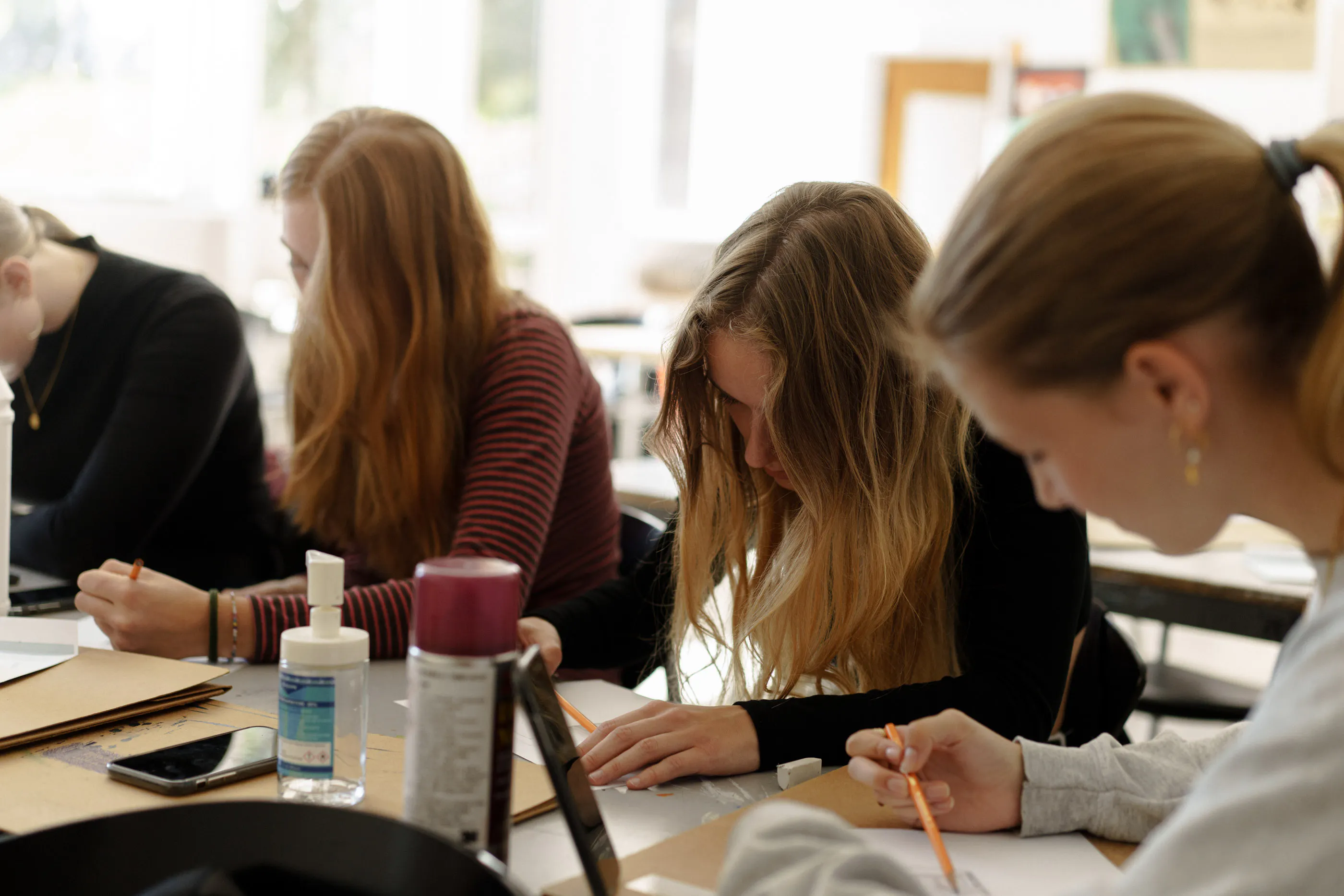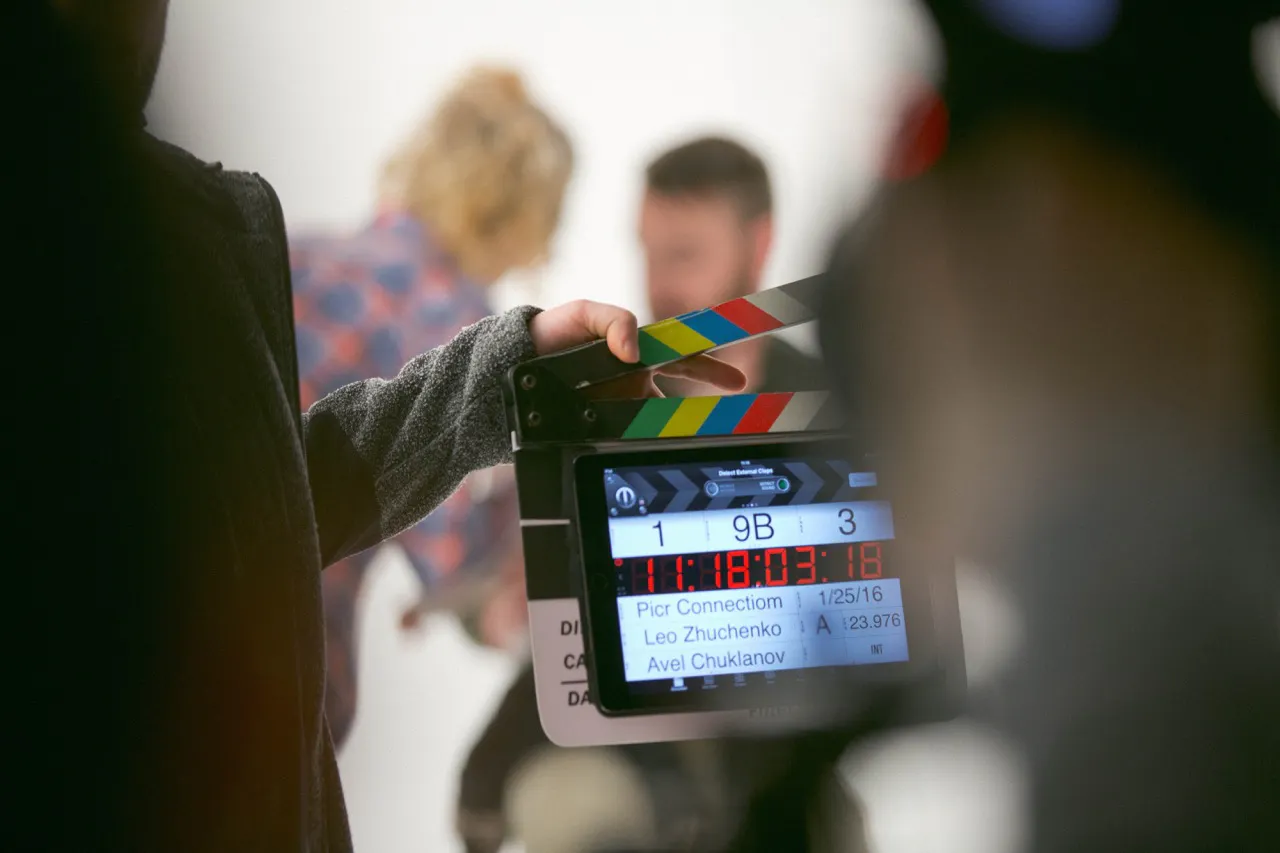
NB. Dette indhold er kun tilgængeligt på engelsk
Group 6: The Arts
Group 6 subjects contain Visual Arts and Film. The subjects are described below.

Visual Arts
Visual Arts (SL/HL)
BG has a long tradition of teaching Visual Arts and offers a unique creative environment at a school where students’ artworks are exhibited on the walls and are appreciated by the whole school. The atmosphere in the art room is pleasant and supportive, and we offer extra curriculum possibilities for working artistically, such as Open Art Workshops every Wednesday, the annual competition The Photomarathon, and every second-year many art students take part in the creation of the scenography for the musical.
Taking Visual Arts, you embark on a two years individual art journey, where you discover what art means to you, and you are guided to find your own expression.
The Visual Arts course enables students to engage in both creative exploration and artistic production and in independent visual and art historical investigation.
The course is designed both for students who want to study visual arts in higher education and also very much welcomes those students who seek life enrichment through visual arts.
The aims of the visual arts course are to enable students to:
Arts
Enjoy lifelong engagement with the arts
Reflections
Become informed, reflective and critical practitioners in the arts
Changing Nature
Understand the dynamic and changing nature of the arts
Explore
Explore and value the diversity of the arts across time, place and cultures
Confidence
Express ideas with confidence and competence
Skills
Develop perceptual and analytical skills.
Artwork
Make artwork that is influenced by personal and cultural contexts
Become informed
Become informed and critical observers and makers of visual culture and media
Communicate concepts
Develop skills, techniques and processes in order to communicate concepts and ideas
Higher Level (240 hours) and Standard Level (150 hours)
The students can take visual art at both higher level and standard level. The course content for HL and SL may be the same. However, due to the different amount of time available for each, students at HL have the opportunity to develop ideas and skills, to produce a larger body of work and work of greater depth.
Studio Work (the practical part)
Students will be introduced to art concepts and techniques through practical work in the studio. They will explore a variation of media and materials; explore and develop artistic qualities in visual arts; study the relationship between form, meaning and content; study social and cultural functions of arts; and learn to appreciate and evaluate their own work and that of others.
Process portfolio (the research)
The purpose of the investigation workbooks is to encourage personal investigation into visual arts, which must be closely related to the studio work undertaken. It is a personal working journal recording the students' critical research of different perspectives of art and design history and the cultural context. The workbooks will contain notes, discussions, cut-outs, sketches, photos, and pictures. The study must include a practical exploration of a variety of visual arts methods. The students will visit art museums and galleries.
The exam
The culmination of the two-year program is an exhibition in which the student independently selects works. The student will write a curatorial rationale explaining the exhibition.
Secondly, the students will write a comparative study investigating and comparing artworks from differing cultural contexts.
Thirdly, also the students’ process portfolios will be graded.
You can browse a gallery of images from last year's exhibition on our Facebook.

Film
Film (SL)
The film course aims to develop students as creative producers of cinematic texts and to cultivate a critical approach toward the evolving world of media.
The course is designed both for students who want to study film in higher education and for those students who seek to engage closely with the language and production of cinema.
At Birkerød Gymnasium, you will have access to state-of-the-art equipment, editing facilities, and even a green screen.
The aims of the film course at SL are to enable students to:
- explore the various contexts of film and make links to and between films, filmmakers, and filmmaking techniques (inquiry)
- acquire and apply skills as discerning interpreters of film and as creators of the film, working both individually and collaboratively (action)
- develop evaluative and critical perspectives on their own film work and the work of others (reflection)
SL Curriculum Overview (150 hours)
The course, which is only being offered at the standard level, will be split up into the following three components:
- Reading film
Examine film as an art form, studying a broad range of film texts from a variety of cultural contexts and analyzing how film elements combine to create meaning. - Contextualizing film
Explore the evolution of film across time and culture. Examine various areas of film focus in order to recognize the similarities and differences that exist between films from contrasting cultural contexts. - Exploring film production roles
Explore various film production roles through engagement with all phases of the filmmaking process. Acquire, develop and apply skills through filmmaking exercises, experiments, and completed films.
Assessment
Students are assessed both externally and internally.
Textual analysis (external)
Students demonstrate their knowledge and understanding of how meaning is constructed in film. They do this through written analysis of a prescribed film text based on a chosen extract (lasting no more than five minutes) from that film. Students consider the cultural context of the film and a variety of film elements.
Contextualizing film (external)
Students will explore the evolution of film across time, space, and culture. Students will examine various areas of film focus in order to recognize the similarities and differences that exist between films from contrasting cultural contexts.
Exploring film production roles (internal)
Students will explore various film production roles through engagement with all phases of the filmmaking process in order to fulfill their own filmmaker intentions. Students acquire, develop and apply skills through filmmaking exercises, experiments, and completed films.